Weapons
Trafficking and smuggling of firearms, as well as their illegal possession are a threat to security in Serbia.
Due to the clearly regional and transnational character of arms smuggling, international cooperation in this field is among the top priorities in the fight against serious and organized crime in our country.
Global and Regional Nature of the Issuee
The development of different types of serious and organized crime in the EU territory is fueled and strengthened by greater quantity and increasing accessibility of illegal weapons, which can be seen from the quantities of seized weapons, as well as an increase in the number of incidents in which firearms and explosive devices were used. Illegal possession, trade, trafficking and production of firearms in the EU shows a high potential for endangering safety both because of the appearance of weapons. parts of which have been made using 3D printers and because of a new trend of manufacture of hand-made weapons from parts that are freely available in some countries.
In the Western Balkans, the illegal possession and smuggling of weapons represents a prominent security problem, which started in the 1990s due to wars in the territory of the former Yugoslavia and general insecurity, which at the time prompted many citizens to acquire weapons for personal safety.
Also, during the wars, large quantities of weapons which had been in the legal possession of the then army, police and territorial defense forces disappeared and later reappeared as nstrumentalities of the most serious crimes in and outside the EU territory.
Since arms trafficking represents a growing international security problem, Serbia has actively joined international cooperation, both with countries of the region and Western European and Scandinavian countries individually, as well as with international organizations such as Interpol, Europol, Empact, Eurojust, Frontex, UNODC and OSCE. In this context, Serbia participates in international Empact and Europol operations, and above all in Joint Action Days South East Europe, which are aimed at exchanging intelligence and suppressing arms smuggling from Serbia and South-East Europe, i.e. Western Balkan countries towards Western Europe.
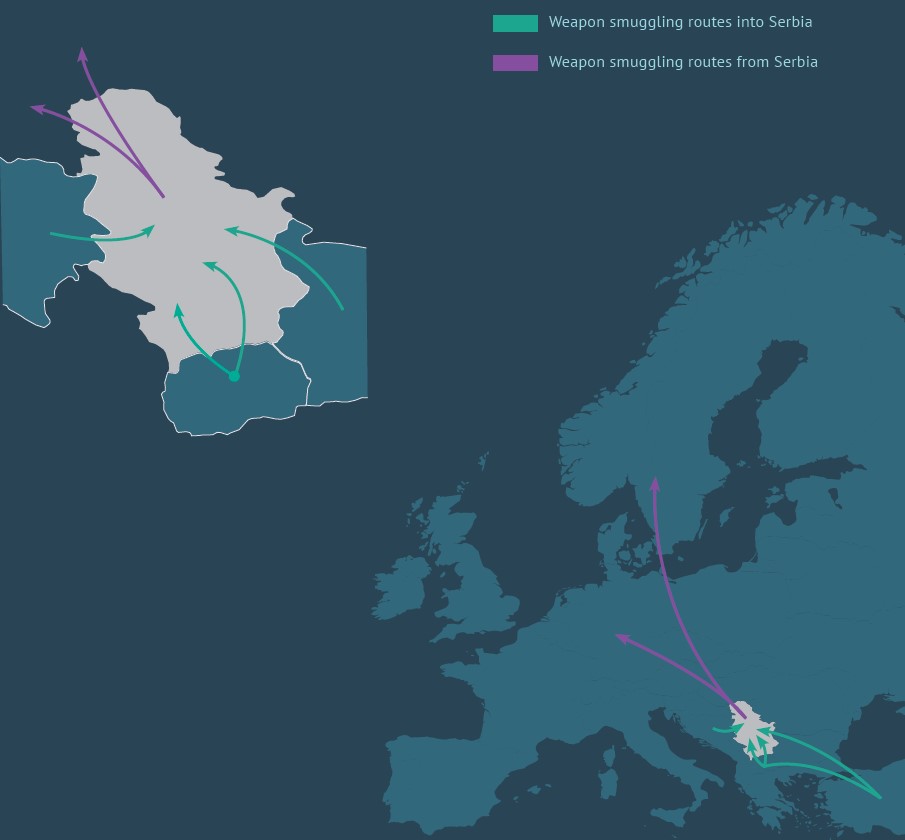
Situation in Serbia
Due to its geographical position, Serbia is a transit country for different types of crime, including arms smuggling to Western European and Scandinavian countries, as the final destinations. A small part of the weapons originates from Serbia, and these weapons have been transferred from legal to illegal flows (regardless of whether they were made in Serbia or in other countries). All Western Balkan countries are transit countries because illegal weapons are many times more expensive on the Western European black market. Smuggling routes usually lead through Hungary (Horgoš and Kelebija border crossings) and Croatia (Batrovci border crossing). Weapons are smuggled into Serbia from Bosnia and Herzegovina, North Macedonia and Bulgaria. Part of the weapons arrive to central Serbia from AP K&M.
In addition to this, modern polymer pistols originating from the EU are smuggled into Western Balkan countries. One of the examples is the smuggling of pistols of the Austrian brand Glock from Albania, through Montenegro and Serbia, to France.
The smuggling of convertible weapons (gas, starting and signal pistols) is still a topical issue. Convertible weapons made in Turkey are smuggled to Serbia from Bulgaria, and a smaller part from Bosnia and Herzegovina. Weapons are also smuggled from Turkey to North Macedonia, where they are modified in illegal workshops, while some of the unmodified weapons are transferred to the territory of AP K&M, where they are also converted into firearms. Converted weapons are sent to Western European and Scandinavian countries through Serbia, and only small quantities remain on the illegal market in our country. Out of all of the convertible weapons seized in Serbia, about 10% were converted into firearms.
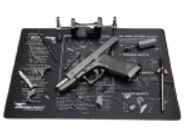
Converted weapons which have been seized in the past four years have mostly been modified by conventional machine tools – by drilling or replacing the existing barrel with one of a smaller caliber, thus changing its purpose and increasing its value on the illegal market. The value of illegal weapons is additionally increased when a silencer is installed. Like in the previous years, these are most frequently Ekol and Zoraki pistols, where original marks are replaced by the Glock and SIG Sauer marks after modification. In addition to the modification of convertible weapons, a new international and EU phenomenon is the modification of firearms. Specifically, Glock pistols are modified when a bump stock is added for the purpose of converting it from a semi-automatic to an automatic pistol.
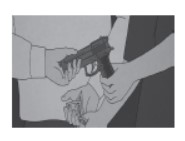
There were no major fluctuations in the structure of weapons and prices on the illegal arms market, where small and light weapons are mostly found. This market still contains weapons which are proliferated through the forging of documents, commission of property crimes or sale of legitimate weapons (including, inter alia, through dark web and different online apps) after being falsely reported as stolen or lost.
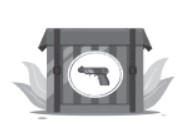
Weapons are most frequently trafficked and smuggled by organized crime groups that deal with human and drug trafficking and smuggling. Trafficking and smuggling of weapons is the dominant criminal activity only of criminal groups established on an ad hoc basis. Smaller quantities of weapons are also trafficked by individuals, including those who had no prior criminal offenses (frequently those who work abroad, where they know people from the criminal environment).

Like in other areas of serious and organized crime, communication between buyers (groups and individuals) and sellers takes place directly or through intermediaries, through protected communication devices, and increasingly through encrypted mobile apps such as Hades and BS No1. Lately, they have been using VPN (frequently encrypted ProtonVPN) and internet phone cards from EU member states, or installed apps for encrypted communication such as Grafen, Calix, etc. The users of these apps form closed groups (group chats) in which weapons are offered and requested.
In October 2019, an investigation into human smuggling led to the arrest near Subotica of a Swedish citizen who had 11 automatic rifles, 17 magazines for automatic rifles, a grenade launcher spigot, 11 pistols and several pieces of ammunition of different calibers.
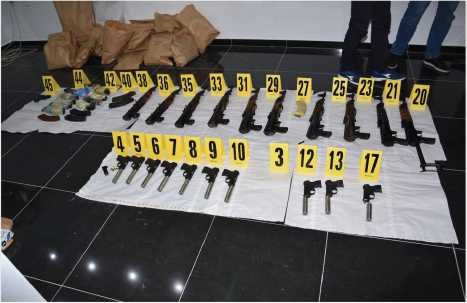
In late June 2020, 25 starting pistols, which had been smuggled from Bosnia and Herzegovina to Serbia, were found in Sevojno.
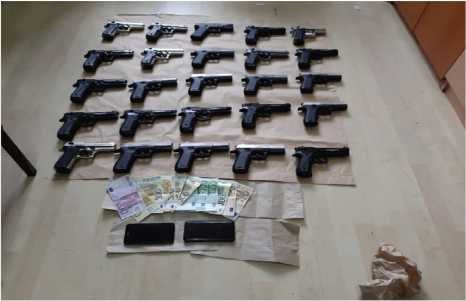
In March 2021, 36 Ekol convertible pistols and more than 1,100 pieces of ammunition for 9-mm convertible weapons were found in the territory of Western Serbia. A person who was selling illegal convertible weapons online was arrested and 75 of his buyers were identified and the same number of pistols were seized from them.
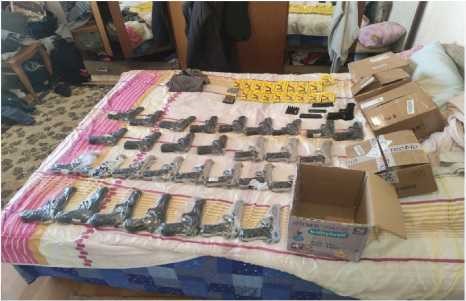
In early March 2022, a specially made secret compartment was discovered under the driver and passenger seats in a car exiting the country at the Batrovci border crossing, containing 15 Glock 17 pistols with obliterated factory numbers and five Walther pistols, 225 pieces of 9-mm ammunition and more than 16.5 kg of marijuana.
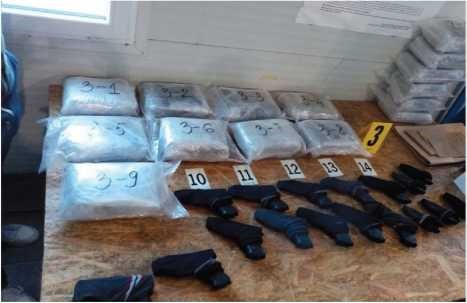
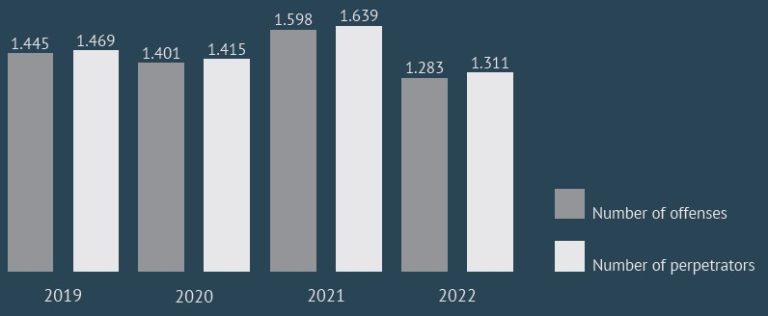

Expected Future developments
► Once the conflict in Ukraine ends, some of the weapons may spill over to illegal markets. This would increase the supply of new weapons on the global and local illegal markets.
► On the domestic illegal arms market, the appearance of weapons modified into Flobert caliber, deactivated and acoustic (due to a simpler procedure during legal sales) is expected. The weapons would later be reactivated, i.e. their original caliber would be restored.
► Special attention should be paid to new online methods of sale of weapons (deep web and darknet), through encrypted mobile apps (Viber, Telegram, etc.) and paid in virtual currencies.
► The appearance of 3D printed weapons is expected. There are still no such weapons in the Republic of Serbia, but they might appear soon on the illegal market as a result of the development of 3D printers, as well as because they can be made at home using charts and software available online.


